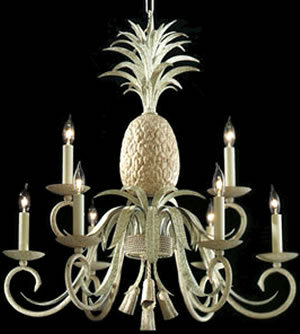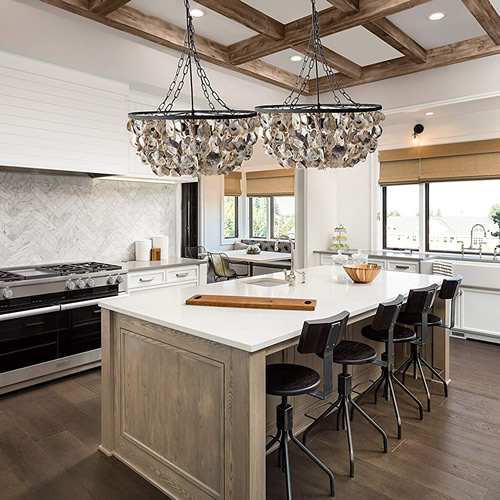What Size Should My Chandelier Be?
When choosing your chandelier, scale matters a lot. There are a lot of factors to think about, but here is an easy way to calculate the best size for your dining room.
The first guideline is:
- Measure your table.
- Divide that number in half.
- That’s your smallest chandelier width.
So, a 48″ table gets a 24″ or more chandelier.
If your table is heavier or darker, either choose a heavier, darker or larger chandelier.
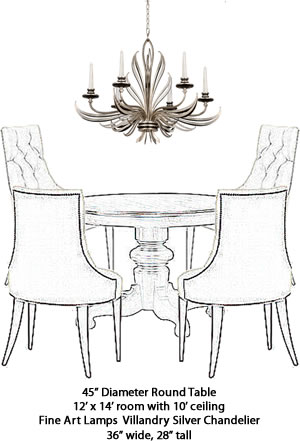
If your table is lighter in scale, plexiglass or glass or low contrast (the same color as the rest of the room); choose a chandelier that matches the scale and feel of the table or go with a smaller chandelier or pendant.
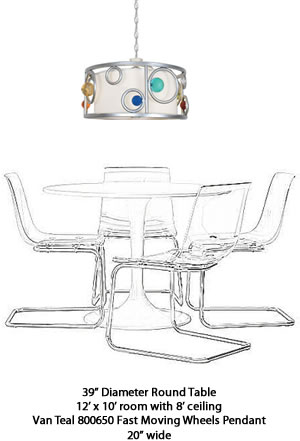
If your table is rectangular, what is your perspective as you walk into the room? If you are looking at your table from the narrow end, that is your measurement. If you are looking at your table from the wide side, that is your measurement.
You might want to us an oval chandelier or two chandeliers or pendants.
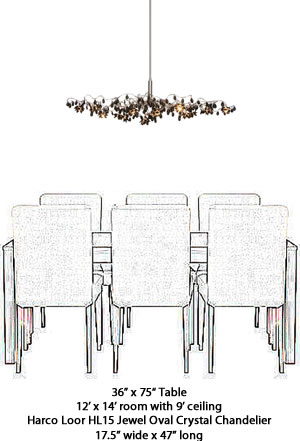
This beautiful eclectic crystal chandelier is available in a variety of sizes, including ovals.
It can be hand twisted to fit your home.
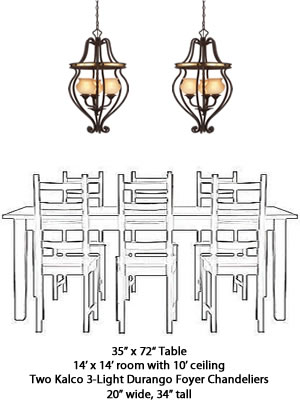
Here is the second guideline:
- Measure your room.
- Add the length and width together.
- The total in feet is your chandelier width in inches.
So a 14′ x 18′ room gets a 32″ or so chandelier.
Since your dining table usually fits the dimensions of your room, you should get a similar number using both methods. If your chandelier is not in the center of the room, or if it is in an area of a larger open floor plan, you might want to measure from the outlet box to the closest wall, then double that to get your measurements. So if your chandelier will hang 5 feet from the closest wall on one side and 6 feet from the closest wall on the other side, (5+6) x 2 = 22. A 22″ chandelier should fit the scale of the area. The table will likely be smaller, too.
“A chandelier that’s not big enough can make a room feel smaller. A good guideline: Measure the room’s length and width, and add those together. Then use that number for the diameter, substituting ‘inches’ for ‘feet.’ So if your room is 10 feet by 18 feet, you should look for a chandelier with a diameter of at least 28 inches.”
HGTV Design Star judge Vern Yip, HGTV Magazine
“Determine the right scale. A too-big chandelier will make a small room look even smaller, while a tiny fixture will disappear in a big room. Add your room’s length and width in feet and get a fixture whose width is the same number of inches (a 12′ x 16′ room gets a 28″ light), advises Jeff Dross of Kichler Lighting. Another useful guideline: A chandelier should be at least half the table width (so it won’t look puny). If your ceilings are higher than the standard 8 feet, go for a taller fixture; if your dining area is part of a great room, go even larger.”
Decorating Dos Womans Day February 2012
Discover more from my design42
Subscribe to get the latest posts sent to your email.


